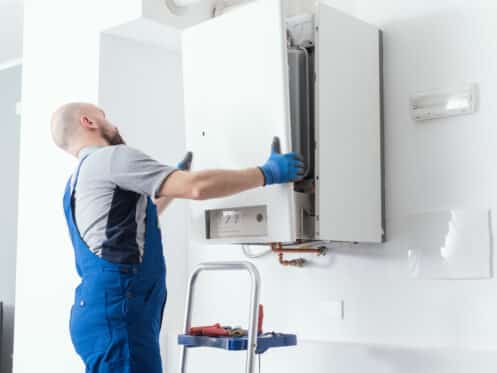Your water heater is crucial in providing hot water for various daily activities. To ensure its proper operation and longevity, regular maintenance is essential. By following a few simple water heater maintenance tips, you can maximize efficiency, prevent issues, and extend the lifespan of your water heater. This article will explore key maintenance practices to keep your water heater functioning optimally.
- Regularly Check the Pressure Relief Valve:
The pressure relief valve is a safety feature that releases excess pressure in the water heater tank. It is important to test this valve periodically to ensure it is working correctly. To do so, lift the valve lever and let some water flow. If water flows freely and stops when you release the lever, it functions properly. If not, it may be necessary to replace the valve.
- Drain and Flush the Tank Annually:
Over time, sediment and minerals can accumulate at the bottom of the water heater tank, affecting its efficiency. To prevent this buildup, it is recommended to drain and flush the tank at least once a year. Turn off the power supply or gas to the water heater, connect a hose to the drain valve, and direct the hose to a suitable drainage area. Open the drain valve and allow the tank to empty. Then, close the drain valve, remove the hose, and refill the tank. Flushing the tank removes sediment, improves heat transfer, and enhances the water heater’s efficiency.
- Insulate Exposed Hot Water Pipes:
Insulating exposed hot water pipes can help prevent heat loss during distribution, resulting in energy savings and faster hot water delivery. Wrap foam pipe insulation around the exposed pipes, paying particular attention to areas where pipes pass through unheated spaces such as basements or crawl spaces. This simple step helps reduce standby heat loss and minimizes the time it takes for hot water to reach your faucets.
- Test and Adjust the Temperature Settings:
The temperature of your water heater can significantly impact energy consumption and safety. Setting the temperature to around 120 degrees Fahrenheit (49 degrees Celsius) is recommended to prevent scalding and minimize energy usage. Use a thermometer to check the hot water temperature at a faucet and adjust the temperature dial on the water heater if necessary.
- Inspect and Replace Anode Rods:
Anode rods are crucial in protecting the water heater tank from corrosion. Over time, these rods deteriorate and need to be replaced to maintain the longevity of your water heater. Consult the manufacturer’s instructions for the specific location and replacement interval of the anode rod in your model. Typically, it is recommended to inspect the anode rod annually and replace it every 3-5 years, depending on the water quality in your area.
- Keep the Area Around the Water Heater Clear:
Ensure that the area around your water heater is clear of clutter, debris, or flammable materials. Keep a clearance of at least two feet around the water heater to allow for proper ventilation and access for maintenance tasks. Clearing the area helps ensure adequate airflow, prevents overheating and allows for easy inspection and servicing of the water heater.
- Schedule Professional Maintenance:
While you can perform several maintenance tasks on your own, it is also advisable to schedule professional maintenance for your water heater. A qualified technician can conduct a comprehensive inspection, perform any necessary adjustments or repairs, and provide expert advice on maximizing the efficiency and longevity of your specific water heater model.
Regular maintenance is essential to ensure your water heater’s proper operation and longevity. Implementing these maintenance tips allows you to maximize its efficiency, prevent issues, and extend its lifespan.
For expert water heater maintenance and reliable service, contact Drain Doctor Plumbing and Rooter at 626-332-9984. Keep your water heater running smoothly and efficiently!



